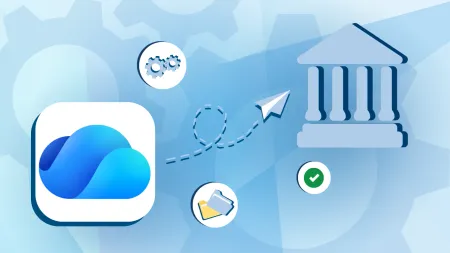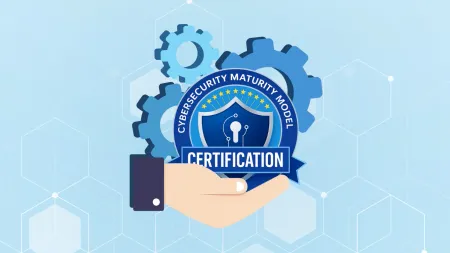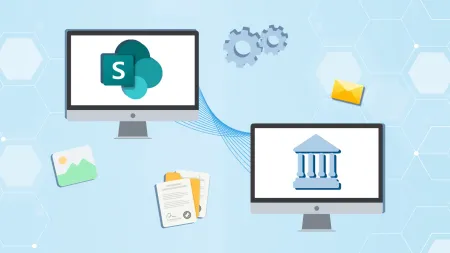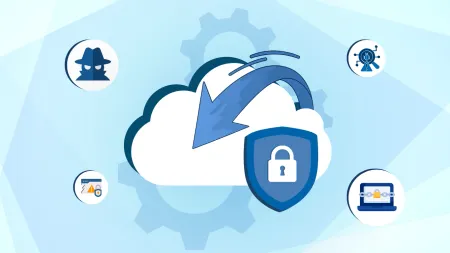Best Cybersecurity Practices for Achieving CMMC Compliance
Achieving CMMC cybersecurity compliance requires strong security controls. Learn best practices for securing your IT environment, protecting CUI, and implementing MFA.
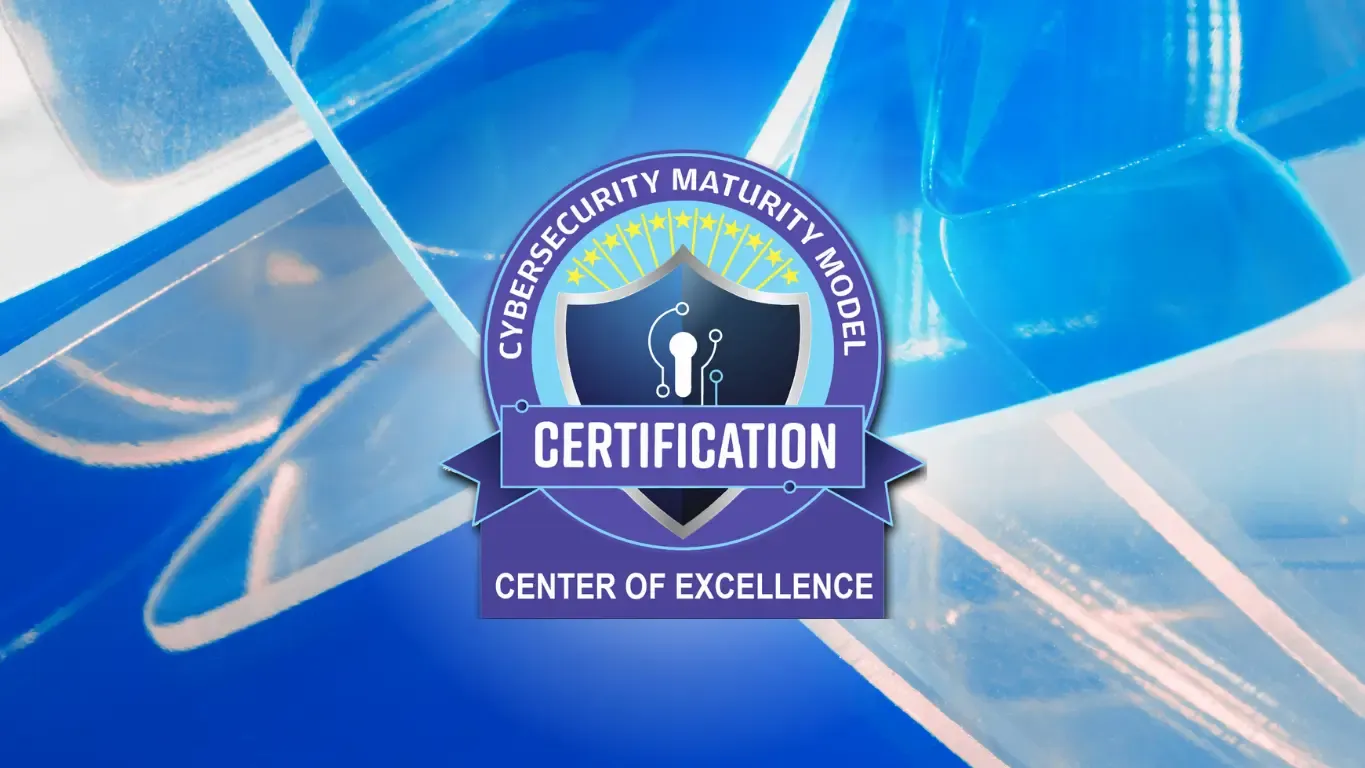
Best Practices for Achieving CMMC Cybersecurity Compliance
Any contractor working with the Department of Defense (DoD) is required to become and remain in compliance with the Cybersecurity Maturity Model Certification (CMMC). This framework was developed by the DoD to ensure that its contractor meets the strict cybersecurity standards required for handling controlled unclassified information (CUI). Unfortunately, CMMC compliance can be a complex process, filled with multiple steps and lots of requirements.
This post will walk you through some of the best practices that will help streamline your CMMC management, giving you the tools you need for successful compliance. Along the way, we’ll talk about key resources and services that can help simplify the process.
Understanding CMMC and Its Importance
Before we get started on the best practices, let’s take a brief moment to discuss what CMMC compliance is and why it matters. CMMC is a comprehensive framework. It standardizes cybersecurity processes to meet the strict standards of the DoD.
Not every project requires the same level of cybersecurity scrutiny. To keep compliance as easy as possible, while still providing the protection needed, the CMMC has three levels. The level expected of you depends on the requirements of your project.
- Level 1: Foundational cybersecurity hygiene
- Level 2: Advanced cyber hygiene (aligned with NIST SP 800-171)
- Level 3: Expert protection against Advanced Persistent Threats (APTs)
Each of these levels builds upon the next to handle the need for increasing security protection.
Best Practices for CMMC Compliance
With explanations out of the way, we can begin laying out how to build an effective CMMC compliance strategy. By following the tips below, your business will have a much better chance of keeping assessors happy.
1. Conduct a Comprehensive Readiness Assessment
Before you do anything, you need to understand where you’re starting from. To do that, take an honest and thorough evaluation of your current security posture. This means conducting a readiness assessment to identify any gaps in your policies, procedures, or technologies. You should base this assessment on the CMMC level that your projects require. Be sure to include room for future projects, which may be at higher levels.
We have a guide for navigating CMMC requirements that can help you determine what you should be checking for. Additionally, our Agile Thrive service is designed to help map your existing cybersecurity capabilities against CMMC requirements to provide you with a clear compliance roadmap.
2. Identify Your CUI and FCI Data
In order to protect your CUI and federal contract information (FCI), you need to know what and where it is. It is important to classify your data properly so you can apply security controls in all of the places they’re required without wasting resources where they aren’t required.
3. Select the Right Technology Environment
The environment in which you store your CUI and FCI is one of the big determinants of how secure it is. Companies like Microsoft have developed special cloud services that meet the high standards required by the DoD. The tech giant has two offerings, GCC and GCC High, depending on the level of security needed.
When storing sensitive data in the cloud, make sure your cloud provider meets the requirements to keep you in compliance. Should you choose to store the data locally instead, check your own hardware for compliance.
4. Implement Managed Cybersecurity Services
Unfortunately, CMMC compliance isn’t a one-and-done thing. After you’ve achieved compliance, you must work diligently to maintain it. This involves keeping a close eye on your security practices as well as staying current with changes to DoD requirements. If you don’t have the expertise or resources to properly manage your security posture, managed services like Agile Defend provide complete security monitoring and management.
5. Develop and Maintain Documentation
Documentation is how you know what needs to be done and how you confirm that it’s been done. Policies, procedures, and audit logs must be clearly recorded and easily accessible for assessors. Without it, they can’t verify your compliance status. Your documentation should cover all aspects of your cybersecurity program, from the security policies to the system security plans, and the incident response procedures.
Clearly outline how your company addresses each CMMC practice and process requirement that applies to your certification level. Regularly review and update the documentation to reflect changes in your operations or in the requirements themselves.
6. Stay Current with CMMC Updates
The CMMC framework evolves as cybersecurity threats and defense priorities change. You can’t stay compliant if you don’t stay updated on these changes. Establish a process for monitoring DoD announcements and any relevant regulatory changes that might change your certification requirements. It can be helpful to assign a dedicated compliance officer or team to track these changes and assess their impact on your procedures.
7. Engage a Trusted CMMC Compliance Partner
CMMC certification is complicated, and the stakes for failing certifications are high. It can be helpful to engage with a knowledgeable, experienced provider who can handle the difficult parts for you. Selecting the Right CMMC Partner can take a big load off you, allowing your company to focus on core business operations with the peace of mind of knowing that compliance is covered.
8. Utilize Available Resources and Checklists
It’s easy to miss a requirement or forget one as things get busy. Thankfully, there are a number of resources available that will help you remember what you need to do. However, before using one, ensure that it was created by a course that understands CMMC and can be trusted for its authority. By picking one or more of these checklists and following them closely, you can ensure that you aren’t forgetting an important compliance requirement that will put your business at risk when assessors come around.
Conclusion
CMMC isn’t just about checking a box off of a list. It’s an important initiative that keeps sensitive information safe and strengthens national security. As such, it deserves the appropriate amount of attention. By following the best practices listed above, you’ll be well on your way to a compliant operation. Agile IT has extensive experience in CMMC compliance. If you need help, AgileThrive and Agile Defend can take a lot of the stress out of compliance. To learn more, contact us today.

